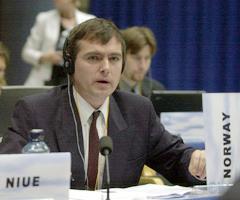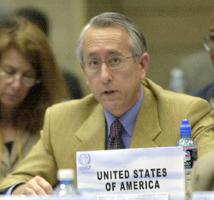|
Last year, the UNEP Global Mercury Assessment Working Group, an assembly of about 150 experts, concluded "there is sufficient evidence of significant global adverse impacts to warrant international action to reduce the risks to human health and the environment arising from the release of mercury into the environment."
Delegates to last week's meeting supported that conclusion, and called for action to reduce mercury emissions. But the United States delegation lobbied successfully to block the adoption of a binding protocol limiting uses of mercury.
Under the action plan reached at the meeting, UNEP has been asked to assist all countries, particularly developing nations and countries with economies in transition such as the former states of the Soviet Union, in a wide ranging initiative to cut emissions of mercury from major sources such as coal fired power stations and incinerators.
The agency's measures may include advising countries on cleaner coal methods, improving the efficiency of power stations, and advice and help on switching to other forms of electricity generation including renewable power sources such as wind and solar power. Assisting countries on reducing other sources and causes of mercury pollution, including contaminated waste sites, dental amalgams and equipment, will also be part of the plan.
The agreement also calls for UNEP to help develop public
awareness programs to alert the public to the risks of mercury
exposure, particularly to vulnerable groups such as pregnant
women and babies, and workers and communities involved in
small scale gold and silver mining.
|





